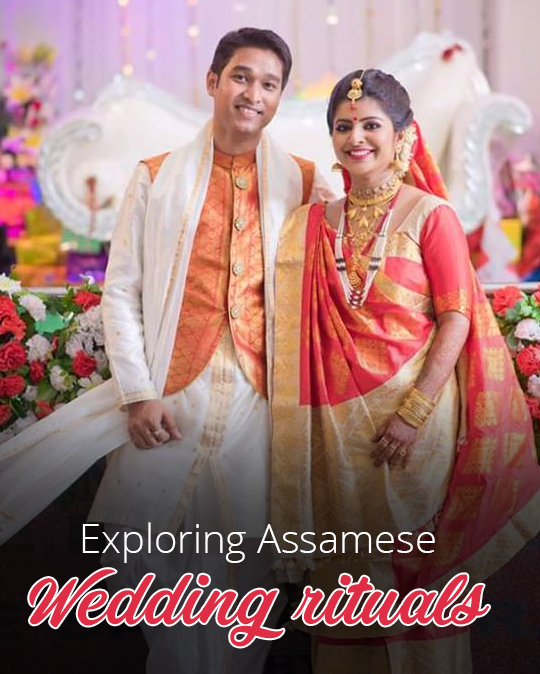India is a diverse country with varied cultures and traditions. It is only natural that weddings are performed differently in different cultures. And there is no better opportunity to understand culture and traditions of a select group than to visit a traditional wedding. Assamese weddings are what we are exploring in this article. ‘Biya’ as they are generally referred to in their local language is characterized by some pre-wedding and wedding rituals. They are carried out over a period of two-three days and are full of color and festivities and bear a strong cultural influence. One of the unique features of these weddings is the traditional ‘Biya geet’ or ‘Biya naam,’ which are traditional songs sung by the women of the Assamese community throughout the wedding festivities.
A glimpse into a traditional ‘Biya’ is given below:
Before the start of any rituals for the wedding, a string of mango leaves is tied on every door of the house. This is thought to ward off any evil intention or negative energy – which is called ‘aam dali gotha.’ With the auspicious setting, Juran Diya follows. The thought behind this ceremony is to shower the ‘bride to be’ with gifts. During the ceremony, the groom’s mother visits the bride’s family with a number of female relatives and presents her with gifts – the wedding attire, makeup, and jewelry. The groom first touches everything given to the bride!
A part of the Juran Diya is Tel Diya ceremony where a ring and a betel nut are placed on the bride’s hair by the mother of the groom. Oil is poured over this thrice, and vermillion is applied. Interestingly, in Assamese weddings, this is the only time vermillion or sindoor is applied. The husband does not apply the sindoor. Only mom-in-law does. Equivalent to ‘Ghadoli’ in Punjabi weddings is the custom of ‘Pani Tola.’ Both the mothers gather water from a nearby pond or river for a ceremonial bath before the wedding. A coin and a knife are given to the ‘soon to be a couple,’ which have to be carried everywhere with them until the wedding is concluded.
For the sacred bath, both the bride and the groom at their respective places are made to sit on seats created with four young banana plants. Oil, a paste of lentils, curd, and turmeric, are applied on their heads, and the ceremony is concluded with sacred water being poured on their heads.
On the day of the wedding, the Assamese groom, ready in his attire gifted by the bride’s family, arrives at the place of the wedding. Interestingly, it is considered inauspicious for the mother of the groom to be a part of the ceremony! So, she leaves before the wedding concludes.
Weddings are more than just ceremonies. They are a culmination of two families and, especially the bride and the groom, who are embarking on their journey towards matrimonial bliss! Although weddings across the country may seem different, they all seek to celebrate the union of the two souls – they are full of joy, celebrations, and love for the new couple for their ever-lasting love and companionship!

